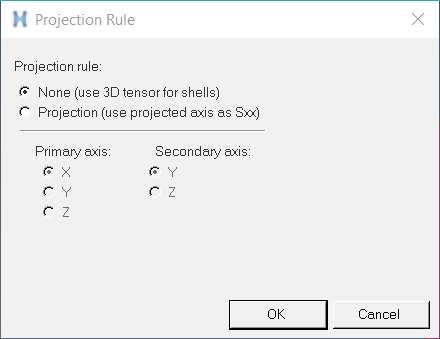Projection Rule
For shell (or planar) elements, results in any 3D coordinate system can be projected onto the element plane.
In order to have a projected coordinate system, you must pick a 3D reference coordinate system from the resolved in pull down menu. This reference coordinate system can either be a global or a user-defined system. Then, the Primary axis (of the reference coordinate system) will be projected on the element plane to obtain the local x axis. If the Primary axis is perpendicular to the element plane, the Secondary axis will be projected to obtain the local x axis. You have the option to pick the Primary axis and Secondary axis from the Projection Rule dialog.

Figure 1.